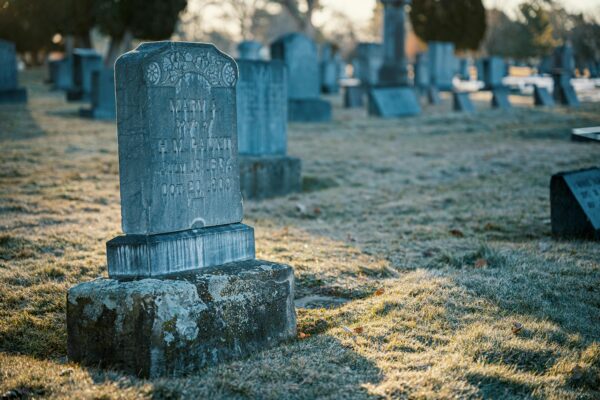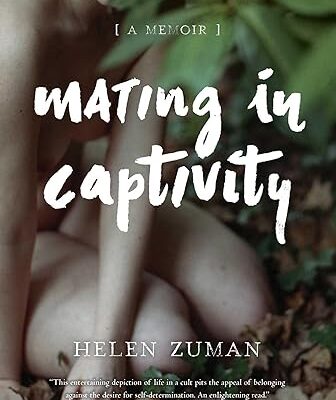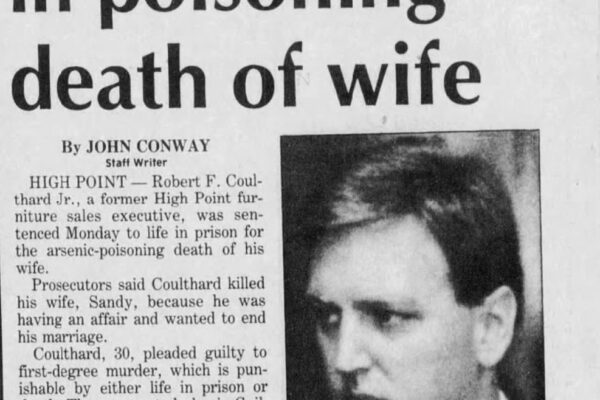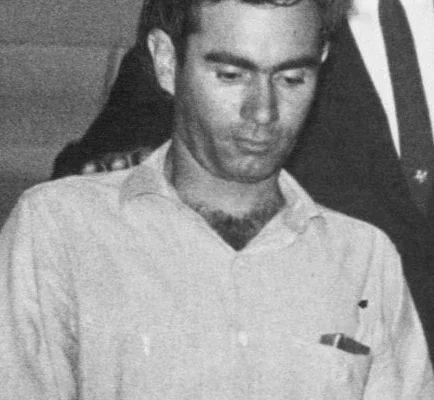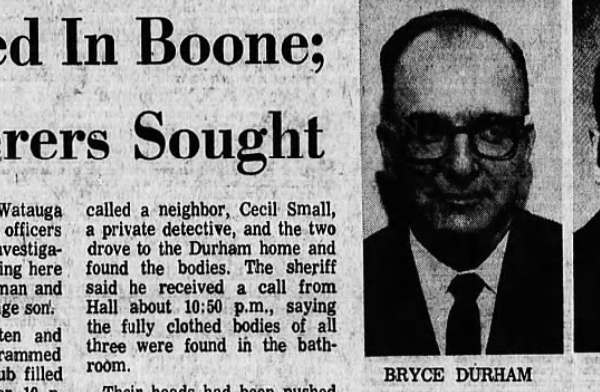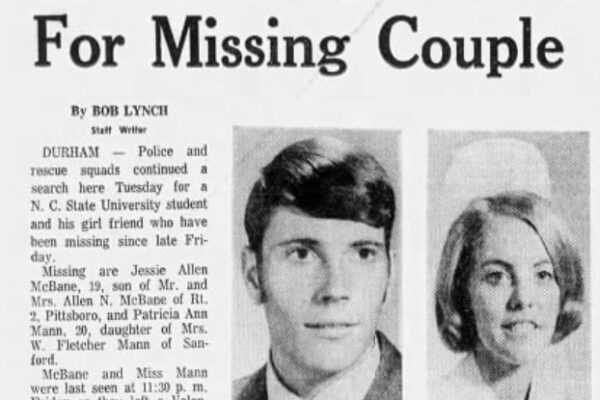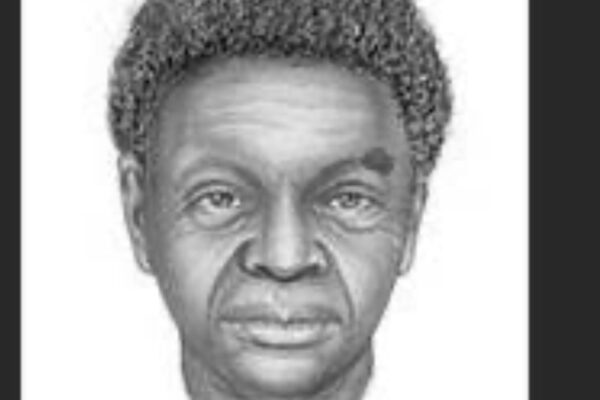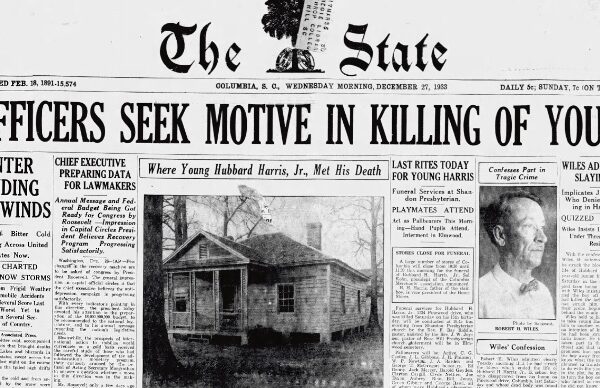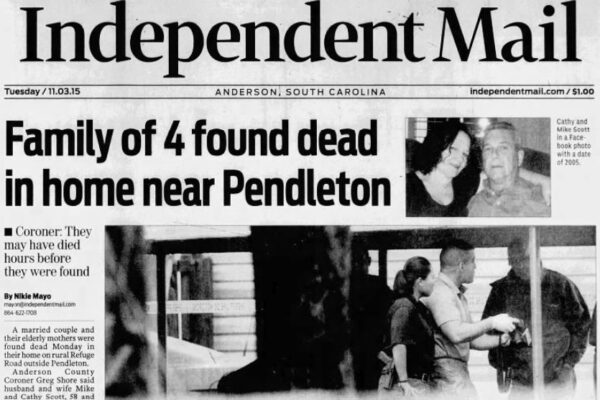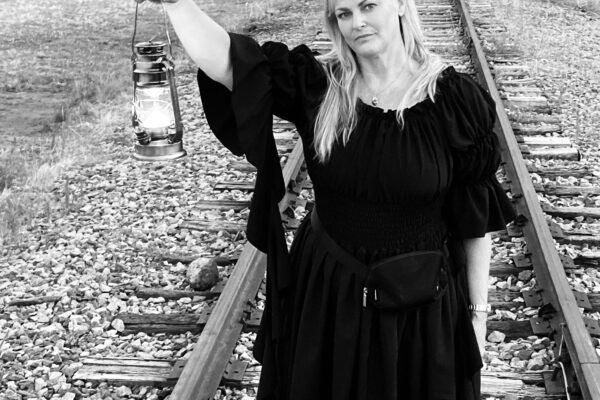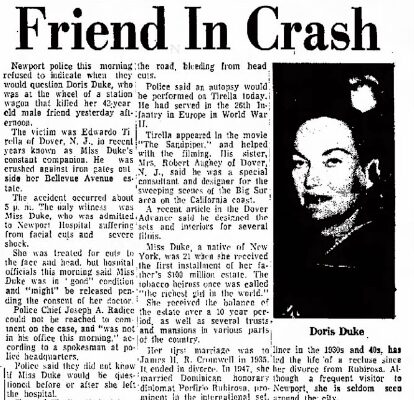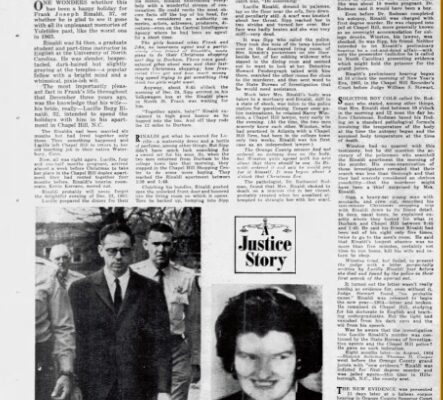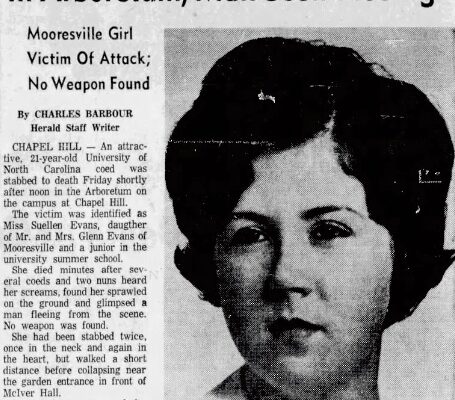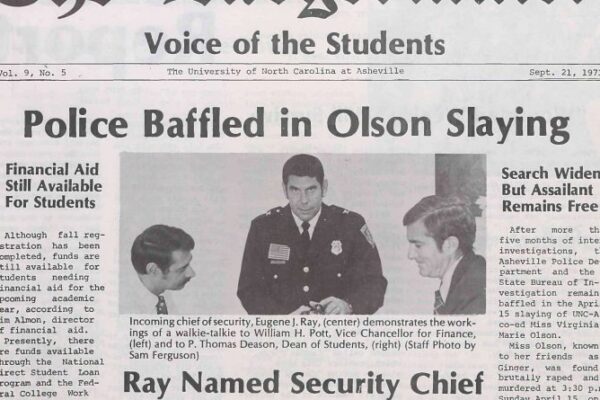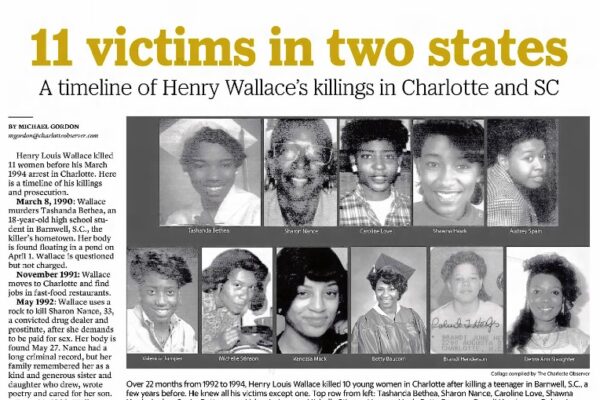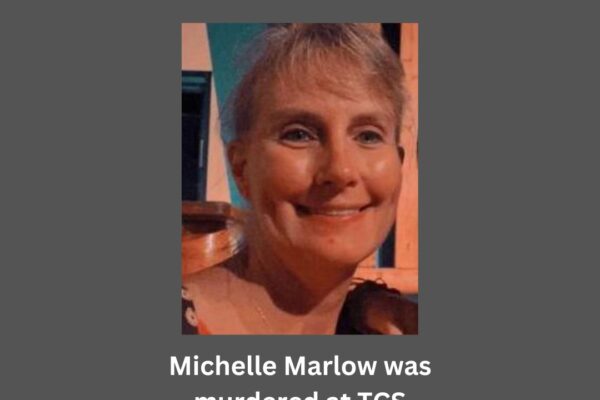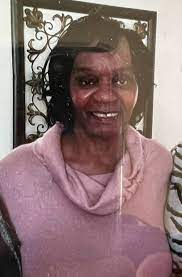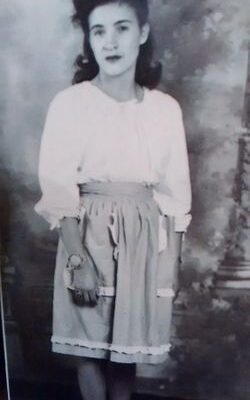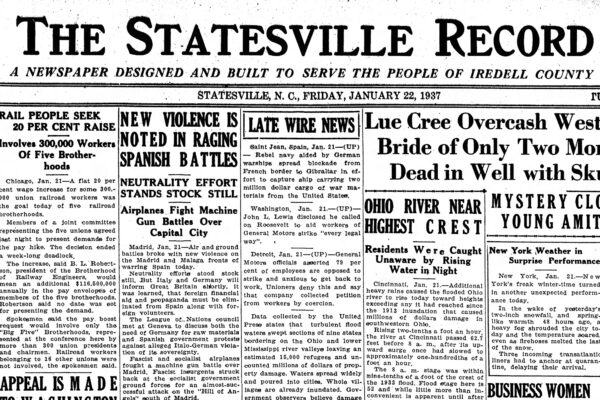I have one of those journals I got as a gift with a positive affirmation stamped on the front cover in cursive. It tells me how beautiful, smart, and talented I am and says I am going to do amazing things. But if you open the notebook, you might be surprised at what you find scribbled on the pages.
This journal has become my true crime notebook.
The first page has a Post-it note where I’ve written “NC/SC John and Jane Does,” a note, no doubt, I wrote as it came to me and didn’t have the notebook nearby. The opening pages hold the original outline for my true crime podcast, “Missing in the Carolinas,” along with ideas for the first four episodes. I have domain name ideas for the eventual corresponding website, marketing, surveys, and merchandise items.
I’ve jotted down notes from various episodes of true crime shows and documentaries. Most of the time my entries are brief, as I’m usually writing them down before I forget amid working on something else. What happens a lot of time is that I’m scanning archives for articles on a specific case and come across another interesting story about a missing person or a crime.
The Denise Durham Story
For example, while researching one case, a news brief in an old newspaper article caught my eye and I wrote: “Murder solved in Flat Rock. 16-year-old Pamela Denise Durham was shot and killed by a former Broadway performer, 64-year-old Wilton Clary. This interested me because of the Broadway performer part and the age difference between the perpetrator and the victim. Plus, being from Western North Carolina, I knew Flat Rock was a very small where you wouldn’t expect a murder like this to take place. I had to learn more. This turned into Episode 85: Denise Durham, Shelby Wilkie, and Marissa Carmichael. The news articles led me down a path that told more of the story but still left unanswered questions. I could find no interviews with anyone in Denise’s life that knew her to be in love with her voice instructor, Wilton McClary. He was, at the time, a well-respected and married man in the town of Flat Rock who ran managed the iconic Flat Rock Playhouse and ran a thrift store tied to the Humane Society. This crime divided the community and still left many, including myself with unanswered questions years later.
If I ever lost this notebook and someone outside of my family picked it up, I have a feeling they would be intrigued, and hopefully not horrified. But my true crime notebook never lets me down. When I’m having a day where I’m not sure what to write about next on my blog or need ideas for a podcast script, I can flip open the notebook, scan it, and quickly have two or three ideas.
The Importance of Newspaper Archives
I’ve mentioned it before, but I get a lot of my ideas from old newspaper archives. Unfortunately, a lot of missing persons cases don’t receive a lot of media coverage, especially in decades past, so most of what find in the archives are detailed accounts of crimes, arrests, and potentially criminal trials. This was how I discovered the topic for Episode 121-The 1981 Murders of Edward “Doc” Harkless, Ralph Felder, Maxlinia Lykes, and Leroy Hemphill. I was researching another South Carolina cold case, and unfortunately, I can’t remember which one now. But the headline involving a about a root doctor murder jumped out at me, because that’s not something you see every day. I had to know more. And the more I read, the more questions I had. What kind of services did this root doctor, Edward “Doc” Harkless, provide to members of the Columbia, South Carolina community? One article cited members law enforcement saying the home, which was a well-maintained home in an otherwise rundown neighborhood, as containing “voodoo literature and other occult items.”
The other thing that stood out to me was the five victims, besides Doc Harkless. His wife was also in the home, and age 39, there was quite an age discrepancy between her and Doc. Their housekeeper, Maxlinia Lykes, was pregnant at the time of the murders. She ended up surviving the shooting and required round-the-clock security, as well as 57-year-old Fletcher Felder, who also lived. In my research, I never learned why Ralph Felder, age 27, who died from his injuries, and his father, Fletcher, were at the home. Another question I have is why Leroy Hemphill, a 52-year-old truck driver, was also there. In some reports it appeared the men might have been there to purchase products from Doc Harkless, as he sold chicken and geese as well as herbs and potions, but how they all came to be gathered in the home at the same time remains a mystery.
The three men eventually convicted of the murders, Charles Livingston, Willie Stroman, and Frank McDowell, all seemed to know Doc Harkless often kept large amounts of cash in his home and were motivated by greed. I don’t think, however, that they expected so many people to be in the home when they carried out the robbery. And sometimes, you just don’t have answers no matter how much research you do. In this instance, the public never found out who pulled the trigger on Doc Harkless, who was the first victim. The men convicted had conflicting versions of what really happened in that house.
A Shocking Abduction
In Episode 119, The 1933 South Carolina Murders of Mary Ravenel and Hubbard Harris Jr., my intention was to only research Mary Ravenel. When you do a general search on South Carolina cold cases, Mary’s story often comes up because it was never solved. I found it interesting because she was an older socialite who was shot in the middle of the street. At first, passersby thought she had been hit by a car, but a doctor discovered a bullet would once she arrived at the hospital. Mary was murdered on November 1, 1933, but the newspapers continued to report on her death over the next month, and that’s where I stumbled across a news article about Hubbard Harris, Jr. the fifteen-year-old who had gone missing a few days before Christmas. The fact that he was the son of a prominent businessman in Columbia made it stand out even more.
If I hadn’t been looking at these old editions of South Carolina newspapers from the 1930s, I’m not sure I would have ever learned about the abduction and murder of Hubbard Harris Jr. It’s not one of those stories, like Mary Ravenel’s, that has a large digital footprint. This research also illustrated how prevalent crime stories (regional, national, and international) were on the front page of newspapers. For example, on the front page of the January 14, 1934 edition of The Roanoke Times, the paper reported Hubbard Harris Jr.’s murderer, Robert Wiles, received the death penalty and would die in the electric chair. The same edition also ran a news brief about eleven guinea pigs carrying tuberculosis that were stolen from a research department at Emory Hospital in Atlanta, Georgia.
Creating a Digital Footprint for Crime
Another way my true crime notebook helps me put together episodes is when I’m looking to share several stories under one theme. For example, this past October, I wanted to put a show together involving domestic violence. Several months ago, I was searching through some old back issues of the Myrtle Beach Sun News. I came across an article describing how a young mother named Mary Ann Willis was murdered by her husband on the Myrtle Beach Air Force Base. I wrote down her name, knowing I wanted to come back to it later. When I was thinking about the domestic violence episode, I found her name in my notebook and went back and began collecting articles. If you haven’t listened to that episode yet, this is truly a tragic story of a woman who was trying to do everything right and leave her abusive husband legally. He still murdered her, gunning her down in the legal affairs office of the air force base. One thing I’ve learned from going down these rabbit holes is that the research I find can end up being helpful to surviving family members.
I have a blog called Finished Pages where I share shorter versions of true crime stories from the podcast. I also put transcripts from the podcast each week on the website for the show, missinginthecarolinas.com. A few weeks ago, I got an Instagram message from the son of Mary Ann Willis. He was only six years old when his mother was killed. He thanked me for sharing her story and finding out so many details, because he didn’t know a lot of what I shared in the episode. Mary Ann’s son said his stepfather was crueler than anyone ever knew and that he witnessed several instances of abuse in their household. This message really touched me, and it made me realize once again that for many of these crimes from the past, it’s difficult to find a digital footprint.
I think this message highlights the importance of being an ethical true crime podcaster as well. You never know when a family member or friend might be listening, so I try to be mindful in the way I share facts about cases and leave out commentary that could be viewed as salacious or distasteful.
I’ve been surprised by the number of comments I get on my blog. Just recently I created a blog post out of the unsolved murders of Pamela Murray and Beverly Sherman from Asheville. I shared their stories in Episode 54. A reader named Teresa commented on the post and said this:
I’ve been wondering about the Murray case for years. I was curious if they’d ever caught the killer and that’s how I found your story. So much time has passed. I wonder if they will ever find the killer now. She was a relative of a friend of mine.
Shocking Headlines
I went down a few other rabbit holes this past summer with Episode 98, Carolina Crimes from the 1950s and 60s. One day when I was flipping through my true crime notebook, I found an entry that read, “John Paul Anderson, convicted of murdering his wife, Brenda Lee Anderson.” From The Charlotte Observer, August 2, 1965, Article Headline: “Hearing Set in South Carolina Drowning.” Underneath that, I had written the names of several people murdered in Chapel Hill, including a woman named Lucille Rinaldi. Once I began compiling articles about those crimes, I became more and more intrigued.
I think the thing that interested me most about those two cases is how differently they ended. Lucille and Frank Rinaldi were having marital issues and had been living apart (she in Connecticut, he in Chapel Hill while he was teaching and working on a graduate degree). The two seemed to be struggling to save their marriage because Lucille was five months pregnant. He went shopping with an acquaintance on Christmas Eve of 1963, and when he returned a few hours later, Lucille had been murdered in their apartment.
Police arrested Frank a few days after her murder but was released from custody because a judge ruled any circumstantial evidence police had found was insufficient to find probably cause. They went back to work, collected more evidence, including the discovery that Frank had purchased two life insurance policies from the acquaintance he’d been with when Lucille was murdered, and arrested him again in the summer of 1964. A jury was deadlocked on his guilt and Frank Rinaldi was acquitted of any involvement having to do with his wife and unborn child’s death.
The death of Brenda Sue Anderson from South Carolina was just as fascinating and also involved a squirrely husband. Brenda had only been married to John Paul Anderson for a few months when he decided to take her out in the water on Folly Beach for a lesson with scuba diving equipment. He then allegedly left her in the water floating on a life raft, and her deceased body washed up on the shore a few hours later. No sign of a raft was ever found, and lo and behold, John Paul had taken out a $50,000 life insurance policy on his wife. The autopsy showed bruising on her arms where she may have been held down under the water. John Paul Anderson was also arrested for murder, and witnesses who testified did not paint the man in a good light—he was a philanderer and a pathological liar. The jury at first remained deadlocked, then came back and convicted the man of murder. So unlike Frank Rinaldi, he was convicted of his wife’s murder, but he did eventually receive parole and was released from prison about ten years later.
I never would have known about either one of these mysterious deaths had I not been scrolling through news archives from the 1960s. These older cases are even more interesting because of the way they were covered in the news. The Daily News in New York ran a lengthy article about Lucille Rinaldi’s murder titled: “Murder at Chapel: How could the part-time instructor murder his wife while on a shopping tour?” The articles about John Paul Anderson all mentioned a sailor being charged with drowning his wife, so of course those caught my eye as well.
I’ll admit some rabbit holes are more disturbing than others, but I think it’s important to keep the information out in the public.
Michael and Kathleen Peterson and “The Staircase”
The Peterson I went down quite the rabbit hole when I finally took a closer look at the Michael and Kathleen Peterson case from Durham. When the MAX series starring Toni Collette and Colin Firth came out, I was inspired to watch the Netflix documentary “The Staircase.” Then I went back and read the old news reports from Kathleen’s death, the arrest of Michael Peterson, and his subsequent two trials. This is one of those cases I feel like people who live in North Carolina talk about all the time, and that’s understandable. I even found myself leaning more into the theory that an owl attacked Kathleen Peterson in her yard before she went inside their house on the night she died.
There are just so many variables to the story that I can understand why Michael Peterson’s defense attorney worked so long on his appeal. This is one of those cases where the defendant did a lot of things that raised eyebrows in his community, such as admitting to same-sex relationships while still married to Kathleen and having a female acquaintance die of a similar fall down the stairs in Germany in 1985. Yet there was also a lot of reasonable doubt when you looked at the entire story. The Michael Peterson story is one where you could be in a room full of people and every single person you asked about it would have a differing opinion on his guilt or innocence, or what really caused Kathleen Peterson’s death.
If you’re a White Lotus fan, you’ll also notice a lot of similarities between the Ratliffe family from Durham in the latest season and the Peterson blended family. Both Michael and Kathleen Peterson were Duke University graduates, and he adopted Elizabeth Ratliff’s two daughters after her death in Germany. So even the Ratliff name was present, even if Director and writer Mike White spelled it differently. If you haven’t listened, I discussed this case at great length in Episodes 43 and 44 of the podcast.
A Love Triangle in Salisbury, N.C.
Episode 35-The North Carolina Murders of Viktor Gunnarsson and Catherine Miller and The Crimes of William Dathan Holbert also sent me down a few different rabbit holes. In the early 1990s a woman named Kay Weden from Salisbury met and began a relationship with a man named Lamont Claxton, who went by the nickname L.C. He worked in law enforcement. At first, everything was going well, and they became engaged, but L.C. became possessive, jealous, controlling, and tried to dictate the way Kay parented her teenage son from a previous relationship. L.C. took disability from work after suffering a back injury and Kay decided she wanted to separate. Lamont began stalking her though, and did not want her dating other people.
The intriguing part of this story is when Kay began dating a Swedish man named Viktor Gunnarson. Viktor had been a suspect in his country when their prime minister was assassinated in February of 1986. While charges against him were eventually dropped, he made his way to the United States, specifically Salisbury, to start over. He sounded like an interesting character. But in December of 1993, after dropping Kay off from a date, he disappeared. He was later found dead in Watauga County, the victim of a homicide. Right after Viktor disappeared, Kay’s mother Catherine Miller was murdered at her apartment. Eventually L.C. Claxton would be convicted in Viktor’s murder and suspected in Catherine’s murder but never tried. Viktor Gunnarson tried to reinvent himself in small town America and instead found himself in a deadly love triangle.
The other story I shared on Episode 35 was that of a man named William Dathan Holbert. He was an expat from western North Carolina who moved to an island called Bocas del Toro off the coast of Panama. I became obsessed with how this small-time criminal from North Carolina decided to murder several people in his new home country. He had figured out that in Panama, you didn’t need to have a lawyer present to sell your home. If you were in possession of the property deed and other corresponding paperwork, you were considered the owner. He first murdered a family living in a hostel that was for sale, took over their property, and began operating a robust social club for the local islanders out of it. He also murdered two other people for their homes. Because he was jovial and friendly, people let their guards down around William and never suspected him to be a murderer. He and his wife Laura were both sentenced to 47 and 26 years in Panamanian prison for their crimes.
A Mysterious Triple Homicide
I could talk about rabbit holes related to true crime stories all day long. I’ll end with a triple homicide that took place in July of 1966 in Hendersonville, North Carolina. That is when two men disposing of some tree limbs and brush discovered the deceased bodies of two men and one woman arranged in a semi-circle off North Lake Summit Road. The victims had been bludgeoned to death and stabbed multiple times.
The two men were Vernon Shipman and Charles Glass. They were well known in the small community of Hendersonville, as they worked together at a music store together called Tempo Music Shop. Shipman, who was 43, also worked at the North Carolina Employment Security Commission. He and Charles Glass, age 36, bought the music store together and Glass managed the day-to-day operations. The two men were known in town to be gay, which, if you can imagine the time period they were living in, caused all sorts of rumors to swirl when they were first reported missing.
The female victim found with the two men was a woman named Louise Shumate. While she had family in Hendersonville, she actually lived in Asheville, and she worked as Taylor Instrument Company in the town of Arden. She was 61, but her co-workers thought she was much younger. She kept to herself and lived in an apartment that didn’t even have a phone. She enjoyed taking photographs in her spare time. Investigators theorized that Louise, out picking blueberries or taking photographs, had stumbled upon someone disposing of the two men’s bodies and murdered her so she couldn’t go to the police. I mentioned before how much these older cold cases are fascinating because of the lack of DNA testing available during that time period, but in this instance, you also have two gay men during a time when homosexuality was more polarizing, especially in the deep south. And with a third victim unrelated to the two men? How could anyone not be intrigued by this murder?
In 2007, the retired police chief from Hendersonville stated publicly that he thought a man named Edward Thompson, Jr. was responsible for the murders. 1968, Thompson had embarked on a killing spree that included the rapes of murders of women in North Carolina and Virginia, and he had confessed to various people that he had murdered the three victims in Hendersonville. He died in prison without ever telling investigators whether he had murdered Vernon Shipman, Charles Glass, and Louise Shumate. You can learn more about this case in Episode 28, Unresolved in North Carolina.





